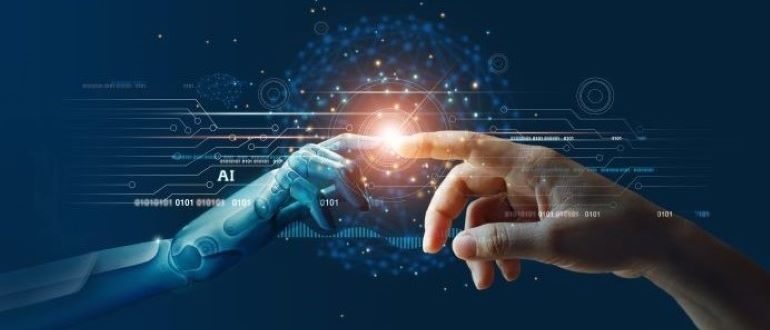
The use of AI in the enterprise continues to increase with the introduction of ChatGPT and other large language models (LLMs). This has many reputable leaders and critics believing this may be the end of certain careers. And while some roles will fade away and others radically evolve, what is clear to me is that due to both its potential and limitations, there will always be a great need for intentional human interaction with AI technology.
Every AI model is shaped by a user’s experience. AI only reinforces its own predictions based on what humans provide. It does not have the empirical intelligence to justify decision making, run a business, or other highly conceptual and deliberate actions, thus making human interaction even more valuable. Today’s organizations need smart and skilled individuals to provide their unique thoughts, insights and intuition to AI – to take full advantage of its potential.
Let’s take a deeper look at what contemporary human interaction with AI looks like and how people and machines can work better together.
Roles Will Change for the Better
Deloitte research on human-machine collaboration showed that 59% of surveyed organizations agreed that the redesign of jobs to integrate AI technology is important to business success. While a small percentage (12%) of organizations said AI will replace workers, the majority agreed that AI will be used to assist workers rather than wholesale replace them. An economic report from Goldman-Sachs earlier this year echoed this sentiment, noting that 300 million jobs could be threatened by AI – some roles more than others. However, many new jobs will crop up to support the technology, offsetting this displacement with the emergence of new occupations and positions.
This new workplace frontier will be led by data skills to support the ongoing AI evolution. Business leaders that participated in Qlik’s latest data literacy report acknowledged that employee working practices are changing. Our data showed that many are moving beyond solely human-to-human engagements and into employees augmenting machine intelligence with creativity and critical thinking – with AI tools helping employees make better decisions (84%) and become more productive (83%). This underscores the big promise we have heard for years: that AI favors the human workforce by taking away mundane, low-value, even boring tasks, freeing people to take on more interesting and meaningful opportunities. As one newer study from MIT and Stanford concluded: tools that make people more effective at their jobs make work less stressful. You can see how things like employee retention and job satisfaction would naturally improve from this, flipping the narrative that AI is killing jobs, rather, it can significantly enhance a workers’ experience.
Human Interaction and Machines Strengthening Each Other
The idea of collaborative intelligence is not new. We have been discussing it on the data and analytics side for many years even before AI started to seep into enterprises. Today, it has regained momentum as the hype cycle of generative AI – and how to use it in business – has risen to a new high.
The symbiotic partnership between humans and machines will define how successfully organizations are able to incorporate AI in ways that are productive for the bottom line. For a true human-machine collaboration to work, most businesses will need to rethink operational processes, implement effective training, leverage smart tools and rewrite job descriptions. These efforts will help humans embrace a leadership role in the relationship, especially in training and tuning AI with high-quality data that is free of biases, with critical evaluation of its outputs. Doing so will create the right conditions for AI, supercharging data processing and computation, enabling speed and scalability of better decisions like never before.
In one real-world example, retail giant Walmart recently rolled out a generative AI app trained on what I can only suspect is super clean, vetted corporate data to over 50,000 of its non-store employees. The “My Assistant” app helps workers with several general, routine tasks such as summarizing long documents. Eventually, the company wants to use the app for more worker-specific duties – including involving it in orientation and helping employees choose benefits, to smaller but incrementally time-consuming activities, like booking a conference room. Walmart has stated it wants AI to do more than increase productivity: it wants AI to truly free workers from monotonous, repetitive tasks and leave those to the machines – leveraging both people and technology for what they do best.
Better Together for an Exciting Future
It is up to humans to set a well-designed AI strategy to ensure that the technology is on the right track and internally set up for success. In this regard, human interaction and machine relationships have never been more important. The reshaping of current roles and the emergence of new ones should be embraced for what it is – a new workplace dynamic that stimulates employee effectiveness and satisfaction by leveraging technology in all the right ways.


